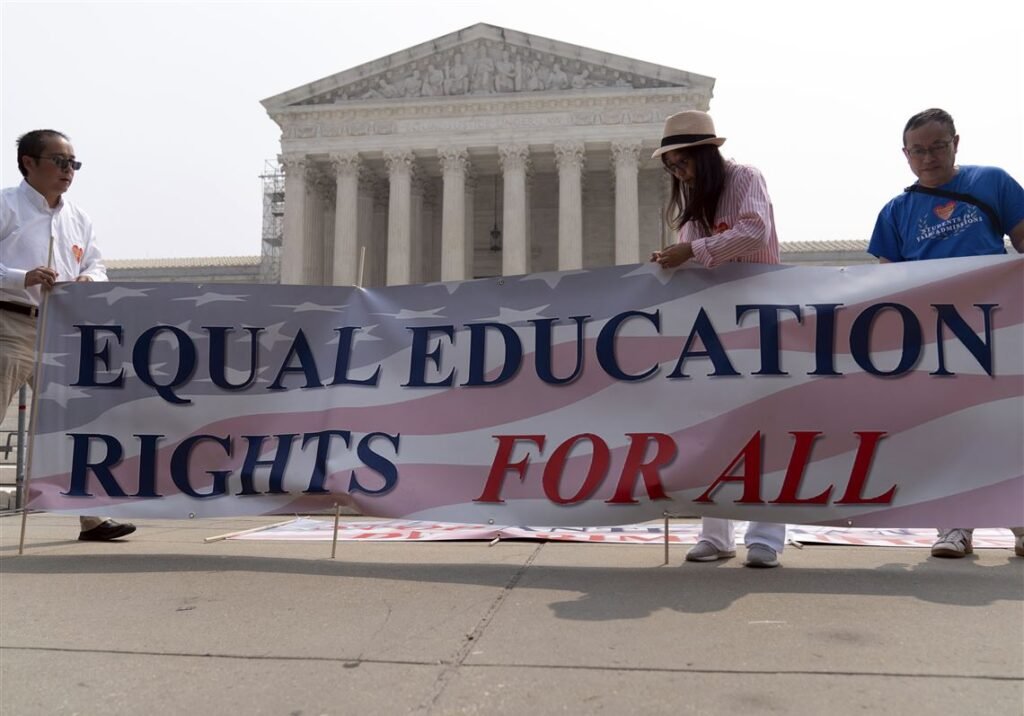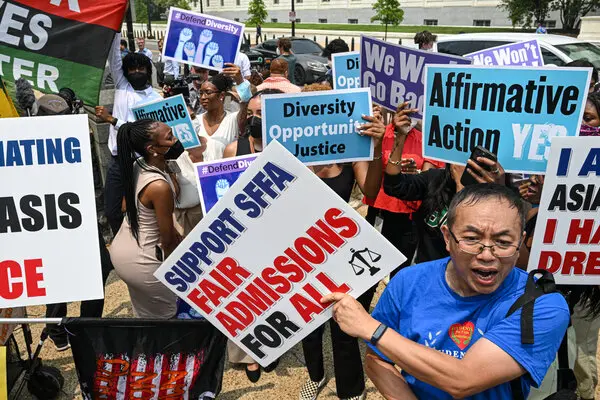Educational discrimination after affirmative action is now a growing concern across the United States. After the Supreme Court’s 2023 decision to strike down race-conscious college admissions, students, educators, and civil rights advocates have expressed fears that diversity in higher education will decline significantly. The decision, seen by many as a major shift in U.S. education policy, ended decades of precedent and has forced colleges and universities to find new ways to promote equity without explicitly considering race.
This article explores how the ban has affected students, institutions, and the broader educational landscape. We’ll also look at the history of affirmative action, the impact of the Supreme Court’s ruling, and the challenges minority students now face when trying to access higher education.
What Was Affirmative Action?
Affirmative action was a policy designed to address historical and systemic discrimination in education and employment. In college admissions, it allowed schools to consider race as one factor among many when selecting students. This policy aimed to create a more diverse student body and provide opportunities for underrepresented communities, especially Black, Hispanic, and Native American students.
For over 40 years, affirmative action helped many students from disadvantaged backgrounds gain access to top universities. Supporters argued that it was essential to counter the effects of racial inequality in education. Critics, however, claimed it created unfair advantages and amounted to “reverse discrimination.”
The Supreme Court’s Decision
In June 2023, the Supreme Court ruled in Students for Fair Admissions v. Harvard and Students for Fair Admissions v. University of North Carolina that race-conscious admissions policies violated the Equal Protection Clause of the Fourteenth Amendment. Chief Justice John Roberts wrote the majority opinion, stating that college admissions must be “colorblind.”
The ruling effectively ended affirmative action at public and private universities across the country. While schools can still consider applicants’ experiences with discrimination or adversity, they are no longer allowed to use race as a direct factor in admissions decisions.
The Immediate Impact on College Admissions
The Supreme Court’s decision had an immediate and far-reaching impact on college admissions. Several top universities reported changes in the composition of their applicant pools and admitted classes:
- Fewer Black and Hispanic applicants were admitted to competitive schools compared to previous years.
- Increased uncertainty among students from marginalized backgrounds about their chances of acceptance.
- A rise in applications from majority groups, especially in states that had previously banned affirmative action.
Colleges are now struggling to maintain diversity without violating the new legal restrictions. Some have turned to other indicators, such as socioeconomic status, zip code, or first-generation status, to identify underrepresented students. However, these measures often fail to capture the full picture of racial inequality.
Educational Discrimination After Affirmative Action

Without affirmative action, many experts fear that educational discrimination after affirmative action will become more visible and harder to fight. Here’s how this discrimination is already playing out:
1. Drop in Campus Diversity
Several universities have reported a decline in Black and Latino student enrollment since the decision. Studies from states like California and Michigan—where affirmative action was banned years ago—show that diversity dropped sharply at flagship public universities.
2. Admissions Advantages for the Privileged
Legacy admissions (preference for children of alumni) and donor preferences still benefit mostly white and wealthy applicants. These policies have come under increased scrutiny but continue to operate despite the Supreme Court’s ruling.
3. Limited Access to Elite Institutions
Minority students who lack access to elite prep schools, college counselors, or SAT prep courses find it harder to compete in a system that favors polished applications. Without affirmative action, these disadvantages are more likely to keep them out of top schools.
4. Psychological Impact on Students
Many students of color report feeling discouraged or unwelcome after the ruling. They worry that their achievements will be seen as less valid or that they no longer belong in academic spaces meant to be inclusive.
How Colleges Are Responding
Colleges and universities are now navigating a challenging landscape. To avoid being accused of violating the ruling, many have made public commitments to promoting diversity through race-neutral means. Some strategies include:
- Removing legacy preferences to create a more level playing field.
- Expanding outreach to low-income and rural communities where students of color are often underrepresented.
- Focusing on holistic admissions, where applicants’ personal stories, essays, and experiences of hardship carry more weight.
- Eliminating standardized testing requirements, which have been criticized for favoring wealthier applicants.
Despite these efforts, experts argue that these strategies are not enough to fully replace the impact affirmative action once had.
Voices from the Classroom
Students and educators have shared their concerns since the ruling:
“I worked so hard to get here, and now it feels like people think I only got in because of my race. That hurts,” said Amara Johnson, a Black student at a top university.
“We used to have programs that brought in students from underserved high schools. Without race as a factor, it’s harder to know who really needs support,” noted a college admissions officer who requested anonymity.
The Broader Social Implications
The ban on affirmative action doesn’t just affect education—it reflects larger social divides. In a country where schools are still largely segregated by race and income, expecting a “colorblind” admissions process seems unrealistic to many.
- K–12 Inequality: Public schools in many areas remain deeply unequal, with poorer facilities, fewer advanced courses, and limited college counseling in communities of color.
- Wealth Gap: The racial wealth gap continues to limit the educational options for Black and Latino families.
- Cultural Representation: Fewer students of color in colleges also means fewer diverse voices in classrooms, student leadership, and eventually, the workforce.
Legal and Political Pushback
The ruling sparked political debates nationwide. Some lawmakers are pushing to:
- Ban legacy admissions to reduce the advantage for wealthy, white applicants.
- Increase funding for public education to close opportunity gaps earlier in the education pipeline.
- Create new federal programs to support college access for disadvantaged students without violating the ruling.
Civil rights groups, meanwhile, are watching how universities implement new admissions policies to ensure that discrimination doesn’t worsen under the guise of neutrality.
What Comes Next?

The fight over educational discrimination after affirmative action is far from over. Universities must now walk a legal tightrope—balancing the demand for fairness and diversity with strict legal limits. Meanwhile, students, families, and advocates continue to call for broader reforms.
Possible paths forward include:
- Building stronger pipelines from underserved schools to colleges.
- Investing in need-based financial aid to help more students afford higher education.
- Encouraging diverse faculty recruitment, mentoring, and retention to foster more inclusive campus environments.
Some institutions may even test the boundaries of the ruling by designing new admissions policies that focus heavily on community impact, personal growth, and overcoming adversity.
Final Thoughts
The end of affirmative action has not ended the debate around race, fairness, and education in America. If anything, it has made educational discrimination after affirmative action more complex and harder to detect. As colleges search for new ways to ensure opportunity for all students, the country must face hard truths about inequality and the limits of colorblind policies in an unequal society.
For real change to happen, it will take more than admissions reforms. It will require a deep commitment to justice, equity, and inclusion—at every level of the educational system.
Do Follow On Instagram.
Read Next – Federal DEI Program Cancellations Spark State Reversals






